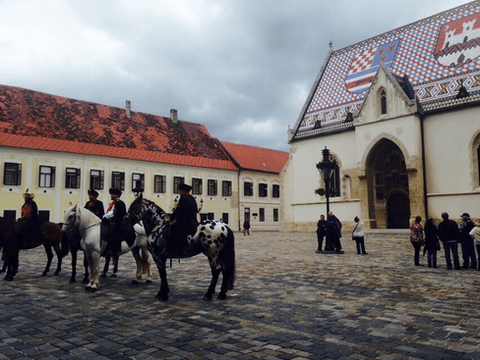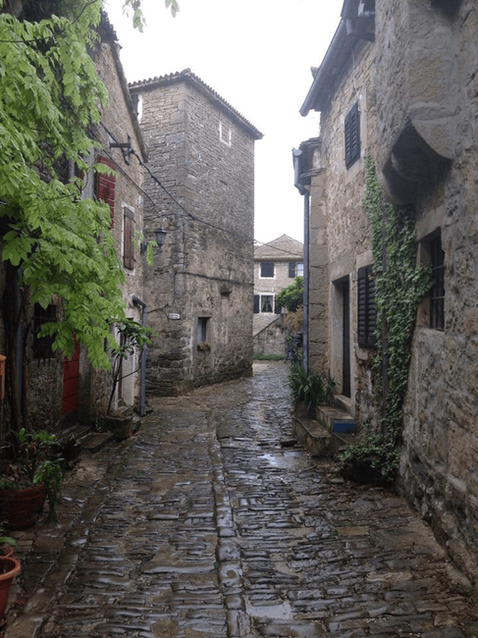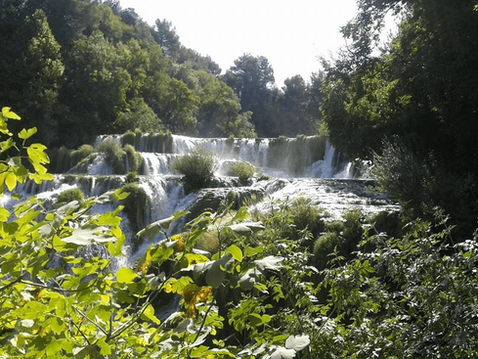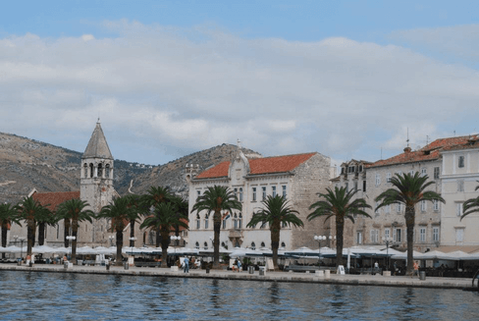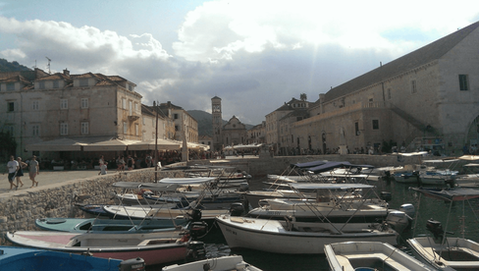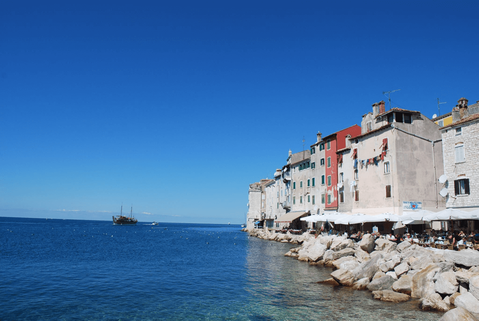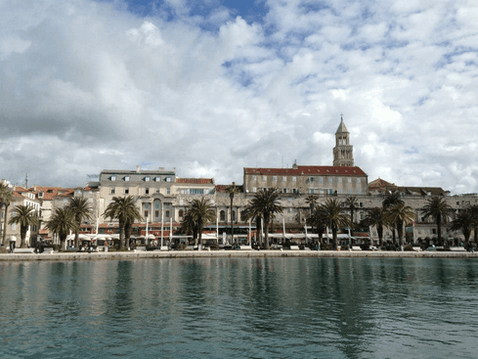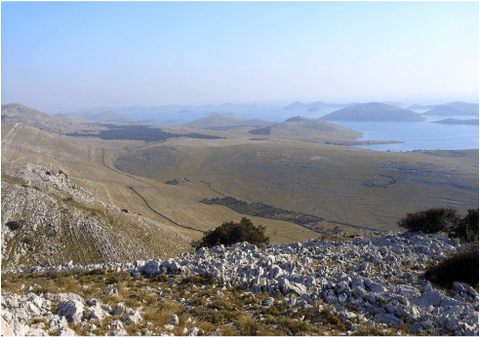Learn About Croatia!
Population: 4.076.000 (2019)
Capital: Zagreb
Currency: Croatian Kuna
Official Language: Croatian
Phone Code: +385
Emergency Numbers:
Police: 192
Fire: 193
Ambulance: 194
Croatia is a very safe country to visit with an extremely low crime rate. On July 1, 2013, Croatia became the 28th country to join the European Union and is in line with all EU laws and standards.
The country has a quite a long coastline along the Adriatic Sea (approximately 950km/590 miles), and a little over 1200 islands to discover (only about 60 are inhabited). Croatia shares a border with several countries; Slovenia, Hungary, Serbia, Bosnia & Herzegovina, and Montenegro.
Croatian language can be quite difficult to learn, but locals really appreciate the effort if you do try to learn a word or two! Most Croats speak English though, especially in areas where tourism exists.
Climate and Average Temperatures:
Croatia has two different climates, one along the coast, and the other in the interior of the country. The coastal region has more of a Mediterranean climate with hot, sunny, dry days in the summer, and relatively mild winters which can be quite rainy. Average temperatures in the summer typically stay between 25-30°C/77-86°F. Winters are cooler, but temperatures don't usually drop below 5°C/41°F.
The interior of Croatia has more of a continental climate where summers are very hot, reaching temperatures well above 30°C. Winters on the other hand can be frigid, with temperatures often dropping below O°C/32°F. Snow is common and can be quite heavy in January and February.
Croatia has two different climates, one along the coast, and the other in the interior of the country. The coastal region has more of a Mediterranean climate with hot, sunny, dry days in the summer, and relatively mild winters which can be quite rainy. Average temperatures in the summer typically stay between 25-30°C/77-86°F. Winters are cooler, but temperatures don't usually drop below 5°C/41°F.
The interior of Croatia has more of a continental climate where summers are very hot, reaching temperatures well above 30°C. Winters on the other hand can be frigid, with temperatures often dropping below O°C/32°F. Snow is common and can be quite heavy in January and February.
Croatian Money & Currency Exchange:
The official currency in Croatia is the Kuna. One Kuna equals 100 Lipas (like cents). Croatia has countless banks, exchange offices and ATMs where you can safely exchange your money from any currency. The foreign currency exchange places will usually be labelled in English. If not, the Croatian term is "Mjenjačnica."
Denominations of 10, 20, 50, 100, 200, 500, 1000 come in paper notes, and there are 1 & 2 kuna coins.
Some restaurants and cafes don't accept credit card payments, so be sure to have enough cash when going out to eat or for a drink.
The official currency in Croatia is the Kuna. One Kuna equals 100 Lipas (like cents). Croatia has countless banks, exchange offices and ATMs where you can safely exchange your money from any currency. The foreign currency exchange places will usually be labelled in English. If not, the Croatian term is "Mjenjačnica."
Denominations of 10, 20, 50, 100, 200, 500, 1000 come in paper notes, and there are 1 & 2 kuna coins.
Some restaurants and cafes don't accept credit card payments, so be sure to have enough cash when going out to eat or for a drink.
A brief description of a few of Croatia's beautiful places!
ZagrebZagreb was founded in 1094 and is currently a growing central European metropolis, home to around 800 000 people. With a charming medieval 'old city' whose architecture and cobbled streets resemble other major European cities, it still holds the feeling of a warm city, built around a quaint center square, Trg Bana Josipa Jelicica. As the capital, and biggest city in Croatia, Zagreb is home to many museums, parks, churches, theaters, galleries and restaurants.
Plitvice National ParkWhat makes Plitvice National Park so beautiful is its sixteen pristine lakes interconnected by a series of waterfalls and streams, all surrounded by lush green forests. Get lost in all of its beauty as you stroll along, listening to the sound of nature all around you. Plitvice National Park was granted UNESCO World Heritage status in 1979.
GroznjanGroznjan is an ancient town in northwestern Istria, and is known as the city of artists with its dozens of galleries that fill the area. Walk through this picture-perfect town and experience art on the street as painters work on their masterpieces, and musicians perform live music at local concerts. Groznjan is also known for its award winning olive oil, excellent wine and succulent truffles found locally by specially trained dogs.
ZadarZadar is a vibrant city full of life, from past to present. Gleaming white stones line the pathways throughout the old center, where you can find archeological ruins left from its time as a Roman colony. Fast forward to present day technology and enjoy a light show by Mother-Nature, called Greetings To The Sun, energized entirely by harnessing solar power from the day's bright rays. You can also enjoy listening to the sea organs controlled by the movement of the waves.
Krka National ParkKrka National Park is perfect for those who admire the serenity of pure nature. With over 100 square kilometers to discover, the beauty is endless. Krka National Park is most famous for its picturesque waterfalls, where guests can freely swim in around the cascading water. Come and experience nature's best massage.
TrogirTrogir is one of the oldest and most exciting cities on the Adriatic. Developed between the 13th and 15th centuries and used as a trading post with the ancient Greeks, it was declared a World Heritage site in 1997. Enjoy the charming atmosphere of the historical old town and be entertained by the musical and folklore events which happen on city squares. Later, stroll the palm-tree lined promenade and take in the views.
KorculaKorcula is one of Croatia's most treasured islands, and is located further from the mainland than its sister-islands, Hvar and Brac. It is therefore a less-crowded, more peaceful place with all of the same beauty as the islands nearer the shore. The island's largest city, Korcula City, is known as Little Dubrovnik and is a historically rich utopia. Wine lovers can satisfy their palettes at one of the many vineyards on the island. Korcula is also the home of Marco Polo. His house is now a museum which can be visited.
|
DubrovnikDubrovnik, the most well known Croatian city, was named a UNESCO World Heritage site in 1979. The city's spectacular old town never ceases to amaze new and returning guests. The white marble streets and baroque buildings create a majestic combination, unique to this amazing city. Dubrovnik is home to many cultural events and displays, and offers its guests dozens of exquisite dining options. Dubrovnik is truly a must-see destination.
HvarWith its rich history, architecture, nature and mild climate, Hvar is indeed a gem on the Adriatic. From beautiful beaches and vast fields of lavander, to vineyards and olive groves galore, this island is packed with appeal. Hvar is known to have a vibrant night-life, but also has many private coves to peacefully take in the beauty and catch the sunset.
RovinjDeemed one of the most romantic place on the Mediterranean, it's not hard to fall in love with Rovinj. This city takes you back in time with its cozy cobblestone streets that wind through the old town, much of which is still untouched by modern urbanism. Rovinj is located on the western coast of Istria (northwest region of Croatia). Climb to the top of the old bell tower and you might catch a glimpse of Italy in the distance, on a sunny day.
SplitSplit is a lively city and the second largest in the country. Even with around 200 000 inhabitants, Split still preserves its friendly small-town feel. This city maintains just the right balance of tradition with a modern twist. Step inside the UNESCO site, Diocletian's Palace, and enjoy a succulent meal at one of the many thriving local restaurants.
VisTraditional Dalmatian architecture and scenic surroundings are what make the island of Vis stand out. Visit the well-know Blue Cave and explore the extraordinary beauty of sea caves. Vis is one of the most peaceful islands on the Adriatic; no crowds, no hassle, just a true escape to paradise. It's also known for its impeccable wine, most famous for the white wine grape, Vugava. Indulge in all this island has to offer.
PulaAs the biggest city in the Istrian region, Pula has much to offer its guests. The city is most famous, however, for its well-preserved Roman amphitheatre, otherwise known as The Arena. Built during the 1st century AD, it is a magnificent sight and an incredible trace of Pula's rich historical past. Today The Arena hosts many events like concerts and film festivals. To catch a great view of the harbor and the city itself, walk up the hill to the Kastel - it's located conveniently in the center of town.
Kornati National ParkKornati National Park is home to 89 unforgettable islands, islets and reefs - this stunning archipelago is sure to leave you breathless. Stop at one of the 20 restaurants on the islands and be served a delectable fish lunch, fresh from the sea, or take a tour of an olive grove and taste the purity in the freshly made oil. Kornati National Park is a definite must-see for sailors, divers or anyone who appreciates the infinite beauty of the sea.
|
OpatijaOver 170 years ago, Opatija built a few hotels and became the first Croatian city to explore the industry of tourism. There is no denying the charm of the Opatija Riviera, which includes a promenade that stretches more than 12 kilometers along the sea. It's no wonder this city quickly grew into one of the most popular and most luxurious destinations along the Adriatic coast.
|
StonThe Great Wall of Croatia? Ston is home to the longest complete fortress system around any European town. This quaint little village is truly a well kept secret on the Adriatic. Just 60 kilometers from Dubrovnik, Ston a perfect place to escape the crowds and enjoy some peace while marveling over the views and a heavenly platter of oysters, which the town is quickly becoming known for.
Photography by Kate Culbert
|
The alphabet & useful words and phrases
Croatia uses mainly the same letters as English, but here are a few new ones:
*The Croatian letters č and ć are pronounced ch
(Example: pomoć is pronounced pomoch.)
*The Croatian letter š is pronounced sh
(Example: škola is pronounced shkola)
*The Croatian letter ž is pronounced like a soft g as in the word luge.
*The Croatian letter j is pronounced like a y
(Example: jogurt is pronounced yogurt)
Croatia uses mainly the same letters as English, but here are a few new ones:
*The Croatian letters č and ć are pronounced ch
(Example: pomoć is pronounced pomoch.)
*The Croatian letter š is pronounced sh
(Example: škola is pronounced shkola)
*The Croatian letter ž is pronounced like a soft g as in the word luge.
*The Croatian letter j is pronounced like a y
(Example: jogurt is pronounced yogurt)
|
hello/goodbye - bok How are you? - Kako ste? please - molim Thank you - Hvala good - dobro Where is... - Gdje je... I need... - Ja trebam... Can I get... - Mogu li dobiti... |
My name is... - Moje je ime... Where are you from? - Otkuda ste? I'm from Canada/America. - Ja sam iz Kanade/Amerike. It was nice to meet you. - Bilo mi je drago. |
|
Do you speak English? - Govorite li Engleski?
I don't speak Croatian. - Ne govorim Hrvatski. I don't understand. - Ne razumijem. I don't know. - Ne znam. Good morning. - Dobro jutro. Good afternoon. - Dobar dan. Good evening. - Dobra Večer. Good night. - Laku noć. |
restaurant - restoran
wine - vino beer - pivo coffee - kava Cheers! - Živjeli! Help! - Pomoć! restroom - WC Excuse me - Oprostite |
Travel is the only thing you buy that makes you richer.
- Unknown
- Unknown

